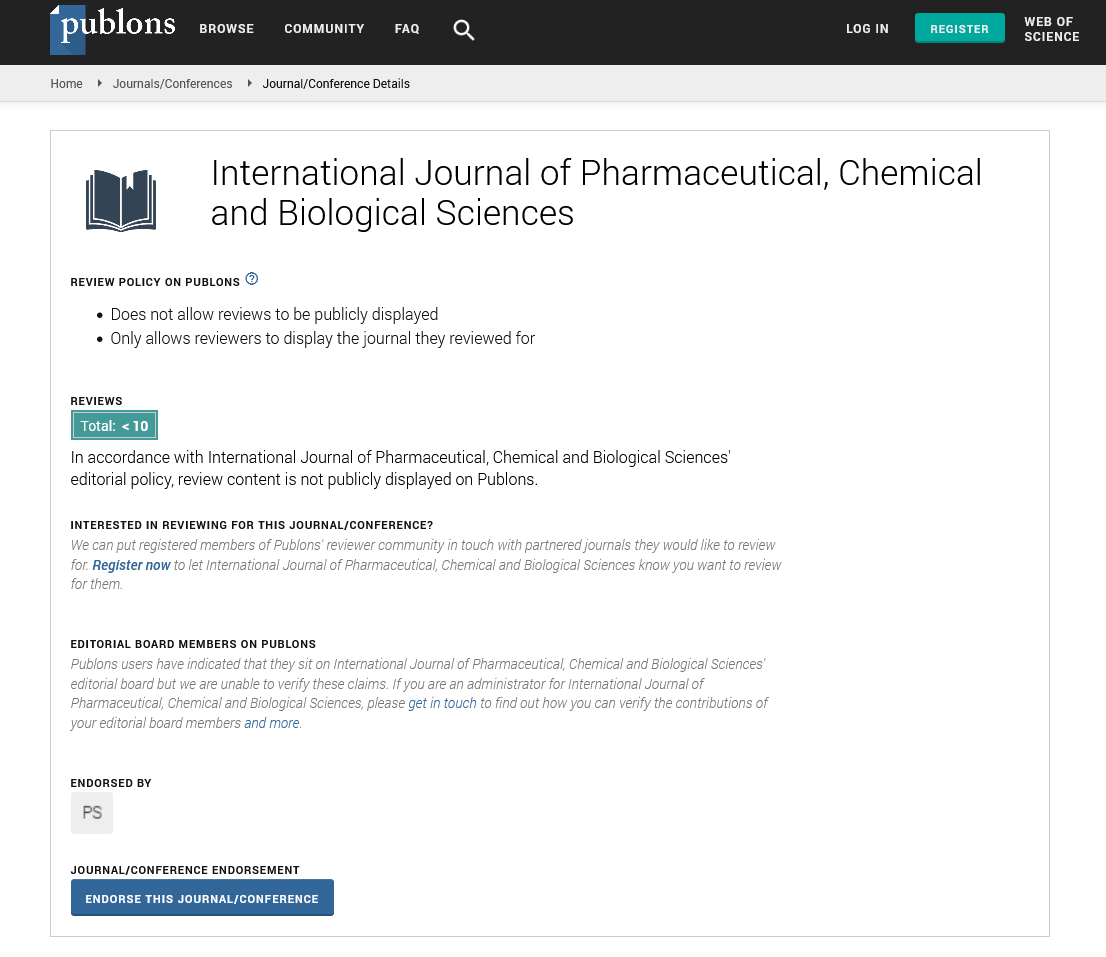Opinion - International Journal of Pharmaceutical, Chemical and Biological Sciences ( 2023) Volume 13, Issue 3
Molecular Modeling: Unveiling the Secrets of Matter at the Molecular Level
Xia Wei*Xia Wei, Department of Chemical Engineering and Technology, Xian Jiaotong University, China,
Received: 30-Aug-2023, Manuscript No. ijpcbs-23-113683; Editor assigned: 01-Sep-2023, Pre QC No. ijpcbs-23-113683 (PQ); Reviewed: 15-Sep-2023, QC No. ijpcbs-23-113683; Revised: 20-Sep-2023, Manuscript No. ijpcbs-23-113683 (R); Published: 27-Sep-2023, DOI: DOI: 10.36648/2471-9668-13.3.10
Introduction
Molecular modeling is a transformative discipline that marries the principles of physics, chemistry, and computer science to understand and predict the behavior of molecules. It allows scientists to explore the complex world of atoms and molecules, from the tiniest components of life to the most intricate synthetic compounds. In this comprehensive article, we will embark on a journey into the captivating realm of molecular modeling, exploring its foundations, techniques, applications, and the exciting frontiers that promise to reshape our understanding of the molecular world. At its core, molecular modeling is the use of computational methods and simulations to investigate the structure, properties, and interactions of molecules at the atomic and molecular level. Understanding the structure of atoms, chemical bonding, and molecular geometry is essential to appreciate the principles of molecular modeling. Quantum mechanical calculations form the foundation of molecular modeling. They provide insights into the electronic structure and energy levels of molecules. Classical molecular dynamics simulations rely on force fields, mathematical models that describe the interactions between atoms and molecules in terms of potential energy functions. Monte Carlo simulations are a stochastic approach used to sample various molecular configurations and calculate thermodynamic properties.
Description
Molecular mechanics methods use empirical force fields to describe the potential energy surface of molecules, enabling the study of molecular structures, conformations, and energy landscapes. Quantum chemistry methods, such as Density Functional Theory (DFT) and Hartree-Fock, provide a quantum mechanical description of molecular electronic structure, allowing for accurate calculations of molecular properties. Molecular Dynamics (MD) simulations track the motion of molecules over time by numerically solving Newton’s equations of motion. They are invaluable for studying dynamic processes in molecules and materials. Molecular docking simulations predict the binding modes and affinities of small molecules (ligands) to macromolecules like proteins, guiding drug discovery and design. Homology modeling uses known protein structures as templates to predict the 3D structure of proteins with similar sequences, providing insights into protein function and drug interactions. Molecular modeling plays a central role in pharmaceutical research by facilitating the design of new drugs, predicting their binding to targets, and optimizing their properties. Modeling aids in the development of new materials with tailored properties, such as polymers, catalysts, and nanomaterials.
Conclusion
Molecular modeling stands as a testament to human ingenuity, unlocking the secrets of the molecular world that were once inaccessible to our senses. It has transformed industries, from drug discovery and materials science to environmental research and beyond. As computational resources grow and techniques evolve, the horizon of possibilities in molecular modeling continues to expand. From designing groundbreaking drugs to understanding the intricate dance of molecules in biological systems, molecular modeling remains at the forefront of scientific discovery, offering solutions to some of the most pressing challenges in science and society. It bridges the gap between theory and reality, providing us with a window into the nanoscale universe of atoms and molecules, where the future of science and technology is being written.
Acknowledgement
None.
Conflict Of Interest
None.

